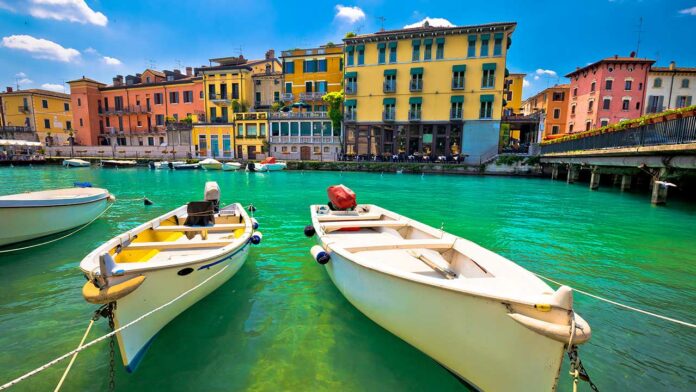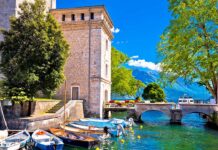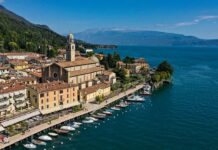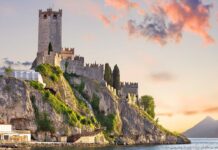Massive bastions, historic buildings, Roman remains and bridges over the canals. The historic center of Peschiera was shaped by the military needs of the Venetians and today has the appearance of a charming fortified citadel.
Overlooking the southernmost shore of Garda Lake, Peschiera del Garda is located a few kilometers from Verona and since 2011, thanks to its fortified system, has entered the list of UNESCO World Heritage Sites, along with other places representative of the Venetian defense works between the 16th and 17th centuries. It is a real fortified village, built by the Venetians using revolutionary solutions of military architecture to defend their landholdings. The area in which Peschiera rises, in fact, located at the mouth of the river Mincio, on the road that, since Roman times, crossed northern Italy from east to west, has always had great strategic importance. The exploration of this unique stronghold on the water must begin with a tour of the ramparts that surround it, following the ancient walkways from which you can enjoy a splendid view.
These imposing brick walls that emerge from the waters of the river Mincio, were built on wooden poles planted on the bottom of the canal, like most of the palaces of Venice. This technique avoids that the wood, stuck in the mud, comes into contact with the air, prevents it from rotting and preserves it over the centuries. Today the bastions are covered with thick vegetation, parks and gardens that make walking on them even more pleasant. Descending from the ramparts and entering the village, in Piazza Ferdinando di Savoia, we encounter another important historical testimony: the archaeological excavations of Arilica, the ancient Peschiera. You can see the remains of an urban plant made of small and modest houses, mosaic floors, warehouses and deposits for goods, connected by paved alleys, typical of a fishing village. Next to the excavations stands the interesting church of San Martino, which seems to rise on an ancient temple of Jupiter, and, on the opposite side, the long and austere building of the military prison, in use until the late ’90s, which was originally the Austrian military hospital.
From Piazza Savoia you can continue towards what is one of the symbols of Peschiera, the sixteenth-century Ponte dei Voltoni, with its five striking brick arches. The bridge connects the two main islands of the town and overlooks the so-called Canale di Mezzo. From here the view on the boats of the fishermen and on the islet with the luxuriant vegetation beyond which the waters of the lake flow into the river, is really remarkable. Crossing the bridge you arrive at the former Habsburg military quarter, built around 1850. Not to be missed is the Caserma dell’Artiglieria, a large arsenal built by Radetzky in the fortress of Peschiera. Today it houses the Historical Archives and the Civic Library, and also hosts shows, exhibitions and events, as well as the Museo della pesca e delle tradizioni locali (Museum of Fishing and Local Traditions).
As you may have guessed, Peschiera is a real open-air museum, rich in historical remains and interesting examples of military architecture, many of which have been beautifully restored and put to new use; it is impossible to list them all but what is certain is that this fortified town is worth (at least) a full-day visit. Among its alleys, moreover, you will find a myriad of souvenir and clothing stores, restaurants, beautiful historic buildings, squares and churches. Peschiera del Garda also has beautiful beaches where you can enjoy a relaxing break, such as the Spiaggia dei Cappuccini or, if you are traveling with your dog, the Braccobaldo Bau Beach.











